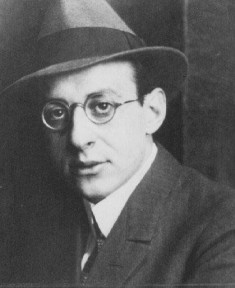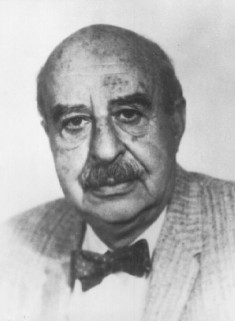| Fritz Perls | |
|---|---|
 |
|
| Psychologist | |
| Born | July 8, 1893 Berlin, German Empire |
| Died | Mar. 14, 1970 (at age 76) Chicago, Illinois |
| Nationality | German |
Fritz Perls was a German psychologist who later emigrated to the United States. He was the originator of the term “Gestalt therapy,” meaning a specific type of psychotherapy that he invented in conjunction with Laura, his wife. Perls spent several years living at the Esalen Institute toward the end of his life.
His view of psychotherapy involves an enhanced sense of perception, emotion, and physical behavior and feelings. Perls is fairly well-known in the wider community for his “Gestalt prayer,” an individualistic quotation which was particularly popular in the 1960s.
Early Life
Perls was born into a Jewish family in Berlin on July 8, 1893. Although he received a fairly conventional education and childhood, he spent a considerable amount of time indulging in the city’s booming bohemian life. He made artistic experiments with new movements of the time, especially Dadaism and Expressionism.
He was also active at a time when strongly left-wing feelings were becoming prevalent in the avant-garde movement, to the extent of supporting at least the idea of revolution. His uncle, Herman Staub, had distinguished himself in the field of law, and Perls was expected by his family to follow in his footsteps. Instead, he chose to embark on a medical career.
Early Adult Years
When World War One broke out in 1914, Perls signed up to serve in the German Army. He found it a traumatic experience, especially during the period he served in the trenches at the front line. Nevertheless, he survived the war and obtained his degree to qualify as a doctor.
In the early years of peace, he was hired as an assistant to Kurt Goldstein and engaged in work to care for soldiers who had suffered injuries to their brains. This work influenced Perls’ eventual decision to specialize in psychoanalysis, and in 1927 he went to Vienna to participate in the technical seminars organized by Wilhelm Reich.
Emigration and Personal Life
Perls was impressed by the idea of character analysis that informed much of Reich’s work and in 1930, Perls was in Berlin, where his psychoanalytical work was supervised by Reich himself. In the same year, he married his wife Laura, and the couple had a son and a daughter together.
 However, in 1933, the Nazi Party came to power in Germany, and Hitler’s regime presented a clear threat to the Jewish Perls. Before the year was out, he and Laura had taken their daughter with them and immigrated to the Netherlands. They were unable to stay in that country for long, and in 1934 the family moved again, this time to South Africa.
However, in 1933, the Nazi Party came to power in Germany, and Hitler’s regime presented a clear threat to the Jewish Perls. Before the year was out, he and Laura had taken their daughter with them and immigrated to the Netherlands. They were unable to stay in that country for long, and in 1934 the family moved again, this time to South Africa.
In his new home, Perls set up an institute for the training of psychoanalysts. By now his fame was spreading, and by 1936 he was sufficiently well known to hold a meeting with Sigmund Freud. However, the meeting proved to be less than satisfactory, and it broke up after only a short time.
Although Perls did not join the armed forces when World War Two began in 1939, three years later he enlisted in the South African Army. He was given the rank of captain and filled the role of psychiatrist to the troops, a post he held until shortly after the end of the war. His South African sojourn brought him into contact with Jan Smuts’ holistic ideas, which he found attractive.
Life in the United States
During the war, Perls published Ego, Hunger, and Aggression, his first book. Two chapters of this were written by his wife, but this fact was not acknowledged either in the original edition or in its 1947 reissue. By this time, the two of them had moved again and left South Africa entirely, eventually settling in New York.
Here, Perls had a short-lived collaboration with Karen Horney, as well as linking up once again with Reich. Perls was somewhat restless during this period, living for a while in Canada and working as the on-board psychiatrist on a cruise ship. He wrote a second book with Paul Goodman, which was published in 1951. This book, Gestalt Therapy, is generally considered to have been his most important work.
Perls’ Later Years
After the publication of the book, the Perls, by now living in an apartment in Manhattan, decided to go on tour. They traveled across the country giving training workshops in Gestalt practices. In 1960, Perls – without his wife – moved to Los Angeles to set up a practice with Jim Simkin. Three years later he moved again, to the Big Sur, California workshops of the Esalen Institute.
He discovered a Zen practice named mini-satori, meaning a short-lived awakening, and included that in his work, as well as visiting a Zen monastery in Japan. In time, he built his own house in the grounds of the Esalen Institute, but left it in 1969.
The following March 14, after surgery on his heart, he died in Chicago at the age of 76.